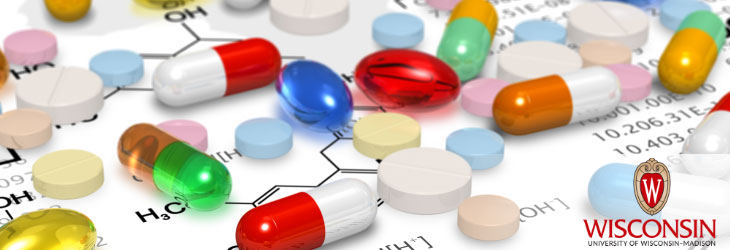Therapeutics & Vaccines

Strong, Stable, Semisynthetic Collagen Mimic for Wound Healing, Artificial Skin, Sutures and Leather
WARF: P08274US
Inventors: Ronald Raines, Frank Kotch
The Wisconsin Alumni Research Foundation (WARF) is seeking commercial partners interested in developing a semisynthetic collagen mimic with increased strength and durability.
Overview
Collagen is the most abundant protein in vertebrates. It serves as the fundamental structural protein for vertebrate tissues and is critically important in wound healing. Many diseases, including arthritis, atherosclerosis, rheumatism, osteoporosis and osteogenesis imperfecta, are linked to weak or abnormal collagen.
In addition to treating diseases associated with collagen abnormalities, collagen could be used for other medical purposes, such as healing wounds. It also can serve as a substrate for several types of artificial skin and as “solder” in tissue welding, a technique in which the collagen in the skin at the edge of a wound is thermally denatured by a laser and then allowed to reanneal.
In connective tissue, individual collagen molecules are wound together in tight triple helices, which are further organized into strong fibrils. The collagen polypeptide chains are composed of approximately 300 repeats of the sequence Xaa-Yaa-Gly, where Xaa is often proline (Pro), Yaa is often (2S,4R)-hydroxyproline (Hyp), and the third residue is always glycine (Gly). Having Hyp, rather than Pro, in the Yaa position leads to greater stability.
In addition to treating diseases associated with collagen abnormalities, collagen could be used for other medical purposes, such as healing wounds. It also can serve as a substrate for several types of artificial skin and as “solder” in tissue welding, a technique in which the collagen in the skin at the edge of a wound is thermally denatured by a laser and then allowed to reanneal.
In connective tissue, individual collagen molecules are wound together in tight triple helices, which are further organized into strong fibrils. The collagen polypeptide chains are composed of approximately 300 repeats of the sequence Xaa-Yaa-Gly, where Xaa is often proline (Pro), Yaa is often (2S,4R)-hydroxyproline (Hyp), and the third residue is always glycine (Gly). Having Hyp, rather than Pro, in the Yaa position leads to greater stability.
The Invention
UW-Madison researchers have discovered that the hydroxyl group of Hyp acts primarily through stereoelectronic effects, and that hydration of Hyp residues provides no benefit. As a result, the Hyp residues in collagen can be modified through O-methylation to increase stability.
The inventors replaced the natural Hyp residues in the Yaa position with synthetic, O-methylated (2S,4R)-4-methoxyproline (Mop) residues. This change resulted in a semisynthetic collagen mimic with increased strength and durability.
The inventors replaced the natural Hyp residues in the Yaa position with synthetic, O-methylated (2S,4R)-4-methoxyproline (Mop) residues. This change resulted in a semisynthetic collagen mimic with increased strength and durability.
Applications
- Treatment of disorders associated with abnormal collagen
- Tissue welding
- Production of artificial skin and sutures
- Preparation of leather-related products by the tanning industry
Key Benefits
- Provides collagen mimics with increased stability
- Provides—for the first time—a synthetically-achievable modification that stabilizes the triple helical conformation of natural collagen
- O-Methylation is a one-step process.
- Enhances the attributes of collagen as a biomaterial or other commercial product
Additional Information
Related Technologies
For current licensing status, please contact Rafael Diaz at [javascript protected email address] or 608-960-9847